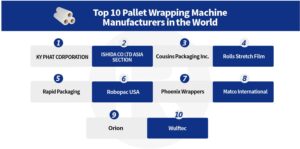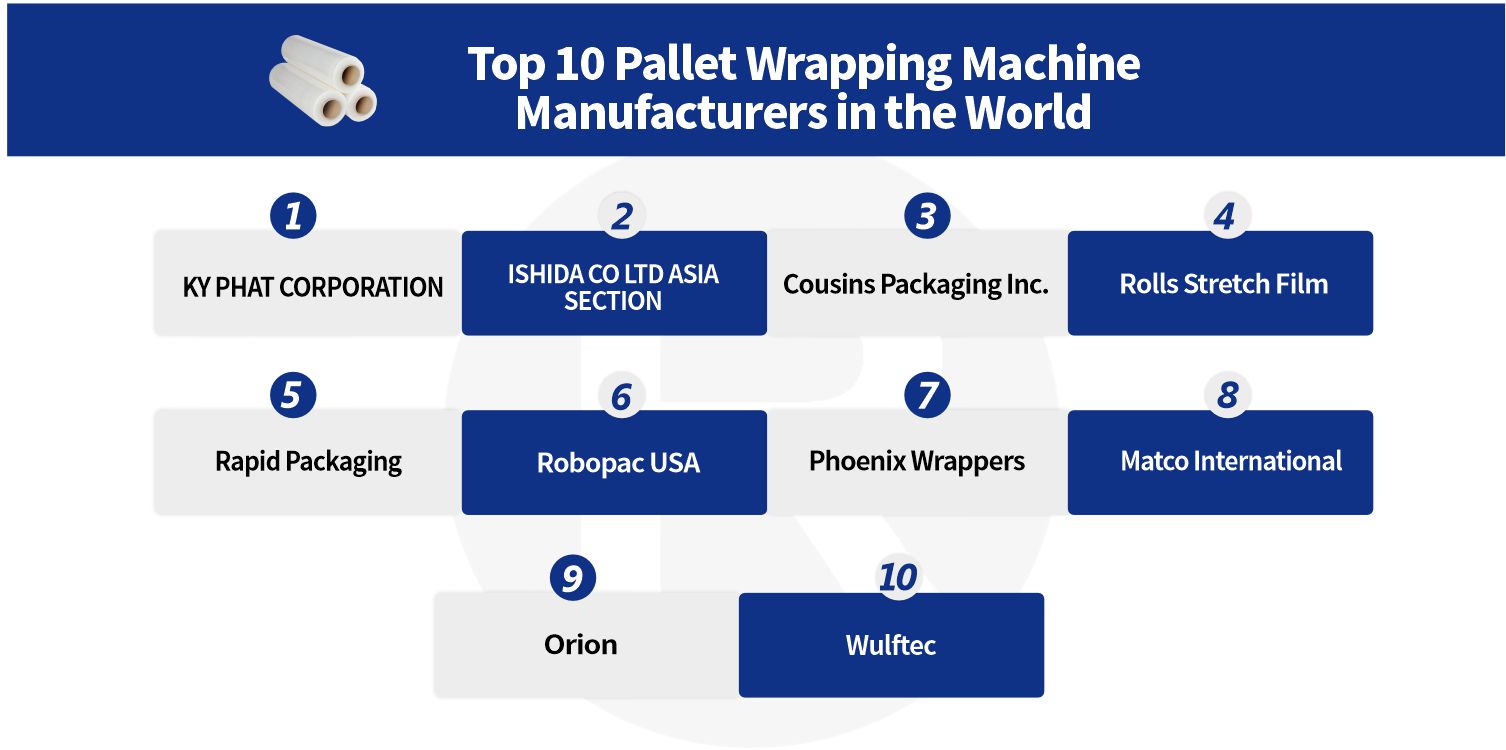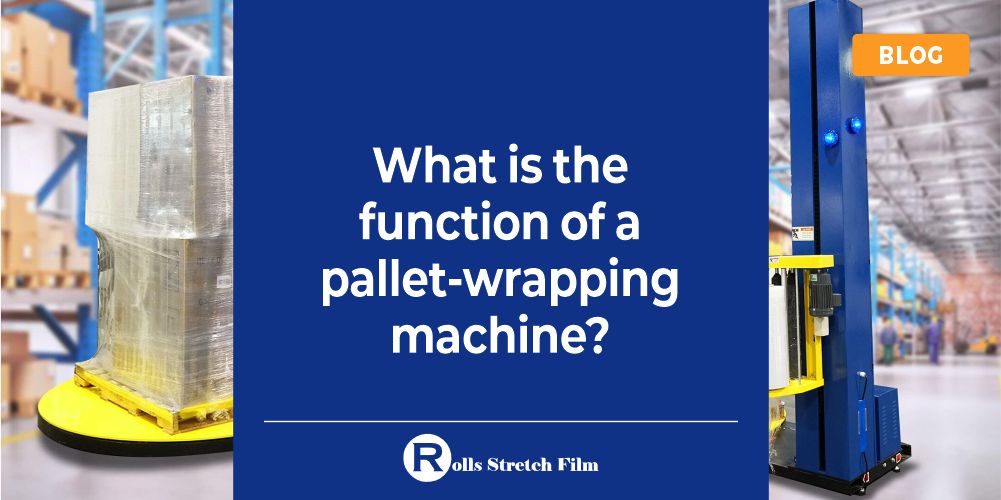Explore innovative strategies and eco-friendly practices to combat stretch film waste. Learn how businesses and individuals can contribute to a circular economy by reducing, reusing, and recycling this commonly used packaging material. Discover sustainable solutions that transform waste into a valuable resource.
Businesses can implement sustainable solutions such as opting for reusable stretch film, using optimized wrapping techniques to minimize material usage, and exploring recyclable alternatives. Educating employees about proper handling and disposal practices can significantly reduce waste.
Know more about the issue of stretch film waste in operations and the importance of reducing stretch film waste for cost savings and environmental sustainability. Identify the sources of the waste and learn the strategies for reducing it.

The issue of stretch film waste in operations
Stretch film, commonly used for packaging and securing goods, generates a substantial amount of waste that can harm the environment. Excessive usage, improper disposal, and lack of recycling options contribute to this problem.
Importance of reducing stretch film waste for cost savings and environmental sustainability
By implementing efficient wrapping techniques and using the right amount of film, businesses can significantly reduce material usage and lower procurement costs. This optimization leads to immediate cost savings and improved operational efficiency.
Reducing stretch film waste contributes to environmental sustainability. By minimizing waste, businesses conserve natural resources, reduce greenhouse gas emissions associated with production and disposal, and mitigate their environmental impact.
Embracing eco-friendly alternatives, such as recyclable or reusable stretch film, promotes a circular economy and supports the transition towards a more sustainable packaging industry.
Identifying sources of stretch film waste
Overuse and excessive wrapping
When businesses use more stretch film than necessary, it leads to increased procurement costs as well as the wastage of valuable resources. Excessive wrapping also adds unnecessary weight and bulk to shipments, resulting in higher transportation costs and increased fuel consumption, further impacting the environment.
Inefficient film application techniques
When stretch film is applied incorrectly or inefficiently, it leads to excessive material usage and increased costs. Overlapping, uneven wrapping, or improper tension can result in wasted film and reduced load stability, leading to potential damage during transit. This not only incurs additional expenses for replacement or repairs but also increases the environmental impact through unnecessary waste generation.
Inadequate equipment maintenance
When equipment used for stretch film application is not properly maintained, it can result in suboptimal performance and excessive film usage. Leaks, malfunctions, or misalignment in the machinery can lead to uneven application, inconsistent tension, and increased film waste.
Lack of employee training and awareness
When employees are unaware of the importance of minimizing film waste or lack the necessary training on proper handling and disposal practices, it can lead to excessive and careless usage of stretch film. This results in unnecessary costs related to procurement and disposal, as well as increased environmental impact.

Strategies for reducing stretch film waste
Optimal film selection based on load characteristics and requirements
By carefully considering factors such as load weight, shape, fragility, and transport conditions, businesses can choose the most appropriate film that provides sufficient strength and stability with minimal material usage. High-performance films, such as multi-layer or pre-stretched films, can offer superior load containment while using less film.
Utilizing pre-stretch equipment for film elongation and efficiency
Pre-stretch equipment is designed to elongate the film before application, maximizing its coverage with minimal material usage. By stretching the film, businesses can achieve a higher yield per roll, reducing the need for additional layers and ultimately minimizing film waste.
The pre-stretch process also enhances load containment and stability, ensuring the secure transportation of goods. This not only reduces the risk of damage during transit but also optimizes the use of stretch film. By investing in pre-stretch equipment, businesses can improve operational efficiency, save on film costs, and contribute to sustainable packaging practices.
Implementing proper wrapping techniques and tension control
By ensuring that employees are trained in the correct wrapping techniques, such as maintaining consistent overlap and avoiding unnecessary overlapping, businesses can minimize the amount of film used per load.
Additionally, proper tension control during the wrapping process helps optimize film usage by ensuring the right amount of stretch is applied to achieve load stability without excessive film application. This prevents unnecessary material waste and reduces the risk of film tearing or breakage during transportation.
Investing in automated wrapping systems for consistent application
Automated wrapping systems offer precise control over the wrapping process, ensuring consistent overlap, tension, and speed. This consistency minimizes the risk of overuse or underuse of stretch film, resulting in optimal material usage. Additionally, automated systems can incorporate advanced features like load sensing and adjustment capabilities, which further enhance efficiency and reduce film waste.
Conducting regular equipment maintenance and calibration
Regular maintenance helps identify and address issues that may affect equipment efficiency and film application. This includes inspecting components, cleaning, lubricating, and replacing worn parts as necessary.
Calibration ensures that the equipment is accurately applying the desired tension and wrapping parameters, preventing overuse or underuse of stretch film. By adhering to a maintenance schedule and performing regular calibration, businesses can optimize equipment performance, reduce downtime, and minimize film waste.

Implementing waste reduction initiatives
Training employees on proper film usage and handling
By providing comprehensive training programs, businesses can educate their employees on the importance of minimizing film waste and teach them the correct techniques for efficient film application. This includes proper handling, cutting, and securing methods.
Employees should also be trained in recognizing load characteristics and requirements to determine the appropriate amount of film needed for each shipment. Additionally, emphasizing the significance of responsible disposal and recycling options can further promote sustainable practices.
By empowering employees with the necessary knowledge and skills, businesses can foster a culture of waste reduction and environmental consciousness. Training sessions should be conducted regularly to reinforce proper film usage and handling practices.
Setting clear guidelines and standard operating procedures for film application
By establishing comprehensive guidelines, businesses can ensure consistent and efficient film usage across their operations. These guidelines should include specific instructions on the amount of film to be used, proper wrapping techniques, tension control, and equipment settings.
Clear SOPs help employees understand the expectations and best practices for film application, minimizing variability and waste. Regularly reviewing and updating these guidelines and SOPs is important to adapt to evolving industry standards and technology advancements.
Monitoring and tracking film usage and waste metrics
By implementing a robust tracking system, businesses can collect data on the amount of film used per load, film waste generated, and overall efficiency of film utilization. This allows for better visibility into the patterns and trends of film consumption, enabling informed decision-making and targeted waste reduction strategies.
Regularly analyzing these metrics helps identify areas of improvement, such as overuse, inefficient wrapping techniques, or equipment issues. By tracking film usage and waste, businesses can set specific targets, measure progress, and implement corrective actions to minimize waste and optimize film utilization.
Encouraging employee involvement and suggestions for waste reduction
Encourage regular communication channels, such as suggestion boxes or team meetings, where employees can share their suggestions and experiences related to waste reduction. Recognize and reward innovative ideas that successfully contribute to waste reduction efforts.
Establishing partnerships with suppliers for recycling and sustainability initiatives
By collaborating with suppliers who prioritize sustainability, businesses can work together to find innovative solutions for recycling stretch film waste. Seek suppliers who offer take-back programs or recycling options for used stretch film.
Engage in discussions with suppliers to understand their commitment to sustainability and explore ways to optimize packaging materials, such as using recyclable or biodegradable alternatives. Consider suppliers who provide reusable stretch film options, which can significantly reduce waste generation.
Measuring the success of waste reduction efforts
Tracking and analyzing film consumption and waste reduction
By consistently monitoring and recording data on film usage, waste generation, and recycling rates, businesses can assess the effectiveness of their waste reduction initiatives. Analyzing this data allows for identifying trends, patterns, and areas of improvement.
Evaluating cost savings and return on investment
By tracking the costs associated with film procurement, disposal, and any investments made in sustainable practices, businesses can calculate the actual savings achieved through waste reduction efforts.
Monitoring employee adherence to waste reduction practices
Businesses can establish monitoring systems and processes to track employee compliance with waste reduction guidelines and standard operating procedures (SOPs). This can include regular audits, inspections, or spot-checks to assess whether employees are following the prescribed practices for film usage, wrapping techniques, and handling procedures.
Gathering feedback from stakeholders on improvements and challenges
Conduct surveys, meetings, or feedback sessions to understand their perspectives, experiences, and suggestions for improving waste reduction efforts. Stakeholders can provide valuable insights into potential areas of improvement, highlight challenges faced in implementing waste reduction practices, and offer innovative ideas for further optimization.

Implementing sustainable solutions for reducing stretch film waste is a crucial step toward cost savings and environmental sustainability. By employing efficient film application techniques, proper equipment maintenance, employee training, and strategic partnerships, businesses can transform waste into valuable resources while minimizing their environmental footprint.














